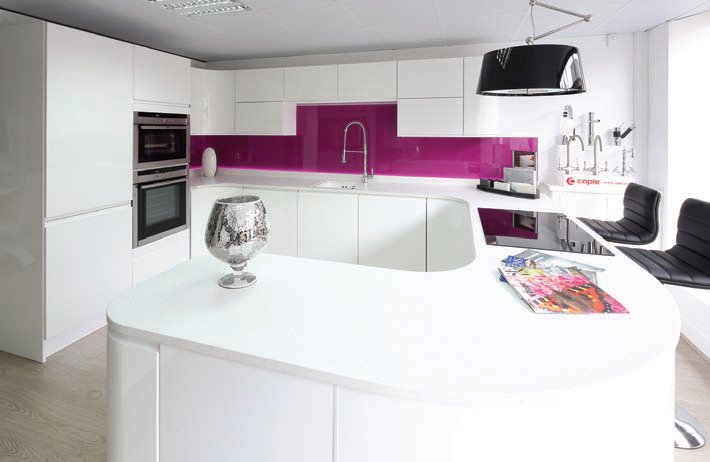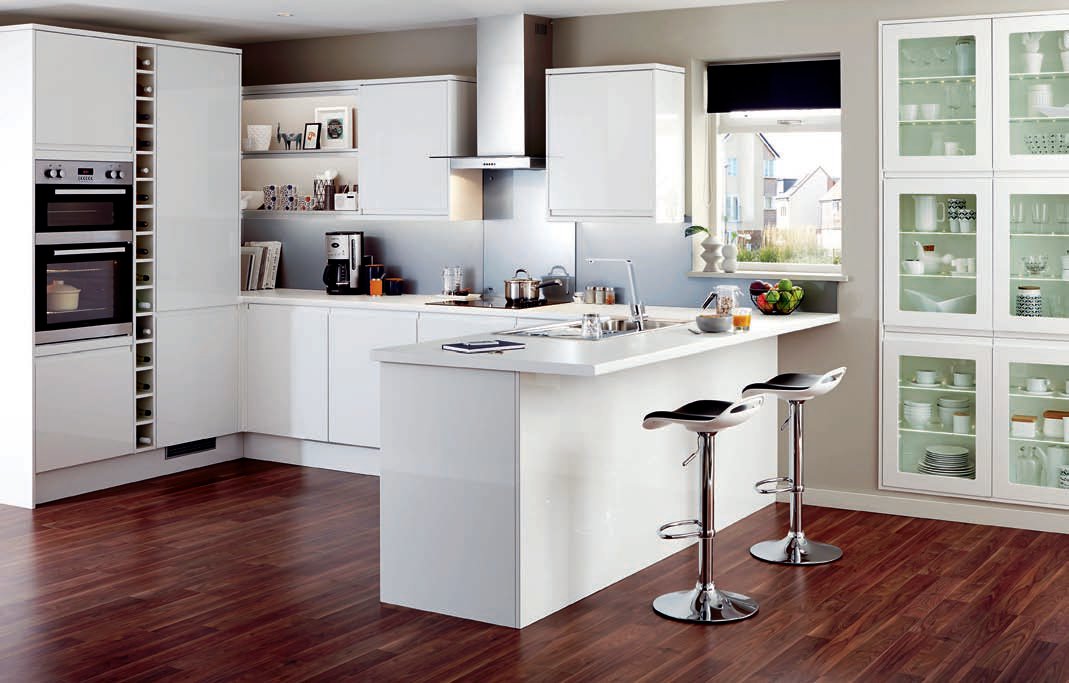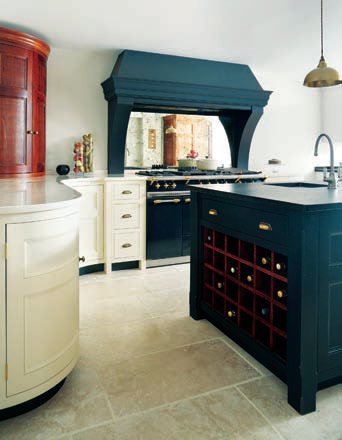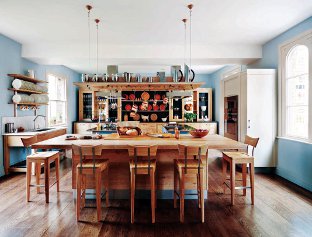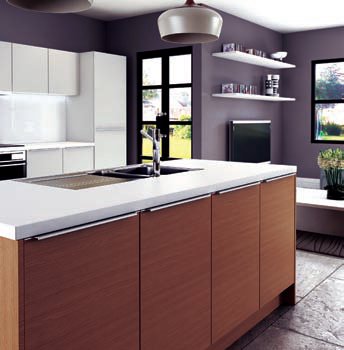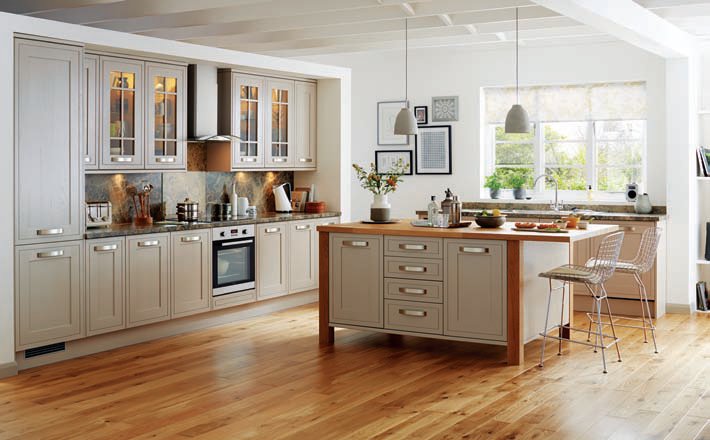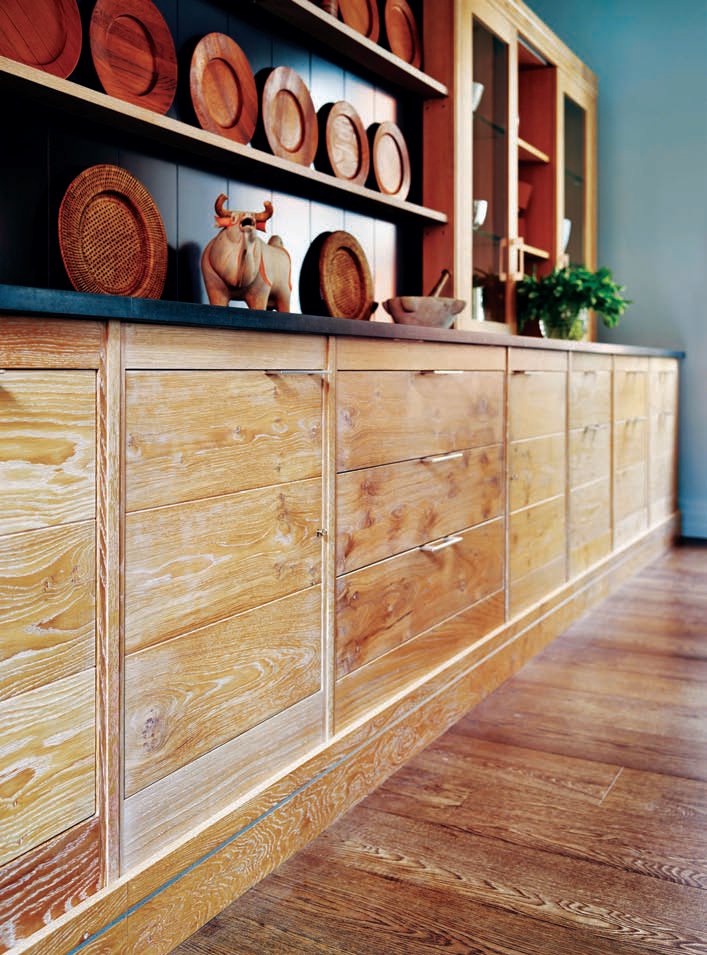Timber on the menu
22 December 2014Timber continues to be, literally, the base for kitchens. Keren Fallwell reports on current design trends
There was a time when kitchens were for cooking.
But nowadays, paradoxically as concerns about the demise of family meal times increases, kitchens are seen as the hub of the home - and increasingly the hi-tech hub.
However, whatever the changing role of the kitchen, the kitchen manufacturing sector remains an important market for timber, and for panel products in particular.
Every year, Howdens Joinery sells 350,000 kitchens, produces 3.5 million carcasses and 2,500km of worktops, and uses around 200,000m³ of chipboard - about 2,500 football pitches if the panels were laid out flat. "Chipboard is the major raw material in our manufacturing process," said head of investor relations Gary Rawlinson. "We're the largest user of chipboard in the UK and probably use about 6-7% of the UK's chipboard supply."
Timber also remains in favour for door fronts, although gloss is also popular. "Gloss finishes will always have a place in kitchens but more and more people are choosing timber and painted finishes," said Simon Collyns, marketing director at manufacturer Symphony. "Solid timber kitchen ranges are still popular and have continued to be among our best performers."
Oak and ash are the most popular choices for solid timber doors, but Symphony has also introduced a range of timber-style finishes. "Our light ash, dark oak and avola grey are available at a lower price point than solid timber and offer a wood-effect style with an integrated handle trim," said Mr Collyns.
Painted ranges are also in demand and this year Symphony installed a paint plant at its Barnsley headquarters.
"Earthy, muted tones are moving up our bestsellers' list with shades like taupe, stone and pumice offering the infusion of colour without the worry of it dating within a few years," said Mr Collyns.
Howarth Timber and Building Supplies also says that, while natural timber finishes are still popular, it too has seen a "significant move" towards painted finishes.
The company, which this year extended its Howarth at Home brand of showrooms to the high street when it opened its seventh store in Barrowford, Lancashire, offers a paint-toorder service. "Matt colours have really taken off, with ivory finishes currently proving to be the most popular," said kitchen sales manager Dave Bushby.
"Other matt colours customers are opting for include cashmere grey, taupe, olive, aubergine and the ever popular duck egg blue."
However, gloss kitchens are Howarth's bestsellers, with grey tones such as anthracite and dove grey starting to have an edge over white. "Although gloss kitchens are still our bestsellers, matt kitchens are quickly becoming just as popular and there will always be a market for natural timber finishes," said Mr Bushby.
Gloss continues to be a favourite for Howdens customers too and, while the trend started at the mid-price range, Gary Rawlinson said it had now filtered into the mainstream, although the finish doesn't give the "sprayed on" look.
However, at the top end of the market solid timber remains popular.
"If people can afford it, they like a wooden framed kitchen," he said, adding that the finish might be left as natural wood, or follow the vogue of a pastel or grey paint. Peter Humphrey, founder and designer at Humphrey Munson Kitchens, said natural wood gave "a unique, warm feel to the kitchen".
For painted cupboards and fascias, the Essex company typically uses tulipwood because of its knot-free finish, while carcasses are made from solid birch plywood.
Drawer boxes, made with dovetail joints, are in solid oak, and smoked oak is often used for free-standing pieces.
For Smallbone of Devizes wood plays "a vital role" in its kitchens, from the cabinets to flooring, worktops and splashbacks. "While solid wood kitchens are often associated with traditional country styles, a bespoke cabinet maker can design a wood kitchen with a modern twist," said design director Steve De Munnich.
Smallbone's range includes European oak and American walnut, wood veneers for interior cabinetry, durable solid timber for worktops and end-grain maple for chopping boards.
Mr De Munnich said applying a limed effect enhanced timber's natural variations and also gave a kitchen a more contemporary look.
Smallbone's parent company, Canburg, has secured an £8m capital investment from the Business Growth Fund to accelerate its UK and international growth and create up to 40 jobs at its showrooms and workshop in Devizes
